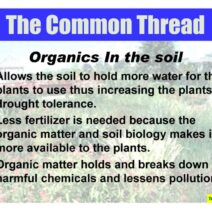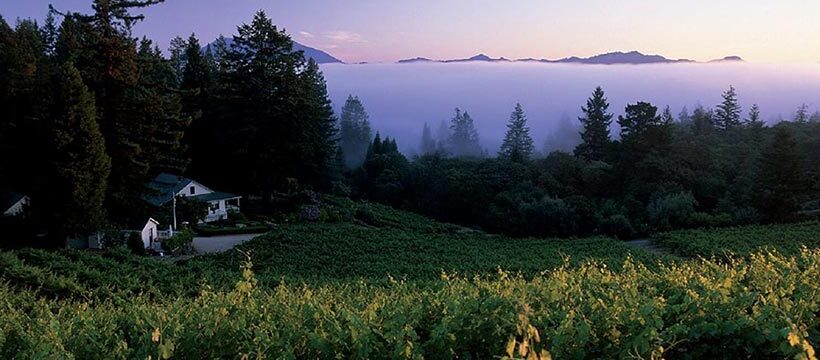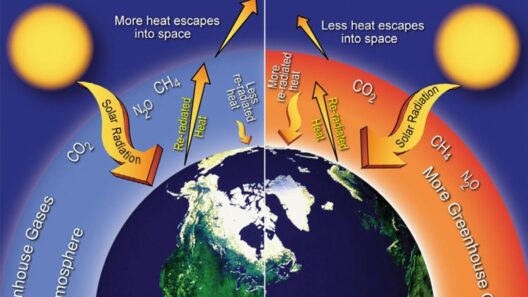Napa Valley, often heralded as a paragon of viticulture, boasts an enviable climate that is seemingly tailor-made for the cultivation of exceptional wines. This famed region, nestled in the heart of California, features a unique combination of geographic characteristics, climatological phenomena, and soil composition that fosters the flourishing of grape varietals. The interplay of these elements contributes not only to the quality of wine produced but also to the allure that captivates wine enthusiasts and casual drinkers alike.
At the core of Napa Valley’s reputation lies its Mediterranean climate, which is characterized by warm, dry summers and mild, wet winters. The region experiences a phenomenon known as the “California Current,” a cold oceanic stream that influences coastal weather patterns, creating a temperate microclimate. This distinction is crucial, for it allows for a prolonged growing season—essential not only for the development of the fruit but also for the cultivation of flavors that define wine profiles.
The diurnal temperature variation in Napa Valley is another critical factor contributing to its wine-making success. During the day, temperatures often soar, allowing grapes to reach optimal ripeness. However, as night falls, the temperature drops significantly. This distinct shift aids in preserving acidity, a vital component for balanced wines. The preservation of acidity ensures a refreshing quality in the final product, heightening the complexity of flavors that can be extracted during fermentation.
Geography further enhances Napa Valley’s favorable conditions. The valley itself runs north to south, flanked by the Vaca Mountains to the east and the Mayacamas Mountains to the west. These parallel mountain ranges serve as both a natural barrier and a conduit for prevailing winds and moisture-laden fog from the Pacific Ocean. As the warm summer air rises during the day, it creates a local atmospheric pressure that allows cooler air from the ocean to flow into the valley, often blanketing vineyards in a soft fog. This fog, particularly prevalent in the morning, plays a critical role in moderating temperatures and mitigating the risk of heat stress on the vines.
One cannot overlook the significance of soil composition in Napa Valley’s winemaking prowess. The valley boasts a diverse tapestry of soil types ranging from alluvial deposits to volcanic materials. Each type of soil imbues different characteristics in the grapes, ultimately influencing the flavor and aroma profiles of the wines. For example, the well-drained, gravelly soils of the Rutherford Bench promote good drainage while allowing roots to penetrate deeply, fostering depth in flavor. Meanwhile, the clay soils of Carneros hold moisture effectively, benefiting cooler climate grape varietals such as Pinot Noir.
It is also fascinating to observe how Napa Valley has strategically positioned itself within the global wine market, harnessing its climatic advantages for economic benefit. Distinguished wineries abound, each cultivating unique varietals that reflect the terroir—a French term encompassing the environmental factors that affect a crop’s phenotype. Education and innovation play substantial roles in this endeavor, with vintners often experimenting with sustainable practices and organic methods to mitigate the effects of climate change. This conscientious approach highlights a growing awareness of responsibility and stewardship in the face of an increasingly volatile climate landscape.
The enchantment of Napa Valley does not solely arise from its climate or soil. The culture surrounding wine production is equally compelling. This region has cultivated a robust community of enthusiasts who embark on journeys of discovery, eager to sample the finest vintages while soaking in the picturesque landscapes. The stunning vistas, adorned with undulating vineyards and awe-inspiring sunsets, create a backdrop that elevates wine tasting to an experiential art form. It is this combination of natural allure and human endeavor that continues to captivate and foster loyalty among visitors.
As climate change looms large over global agriculture, Napa Valley remains acutely aware of its implications. Rising temperatures, altered precipitation patterns, and increased risks of drought necessitate a reevaluation of practices within the wine industry. Wineries are now investing in research to better understand how these changes will impact grape growing. Some are even exploring the cultivation of new varietals better suited to adapting to shifting climatic conditions. This proactive approach underscores the importance of resilience and adaptation, painting a portrait of an industry that is both traditional and forward-thinking.
Ultimately, Napa Valley’s perfect climate for wine is a mosaic of interrelated factors that converge to create an unparalleled environment for viticulture. From its Mediterranean climate, marked by temperature fluctuations and fog, to the variances in soil types and mindful policies regarding sustainability, the region presents an intriguing case study. The confluence of nature and human ingenuity captures an essence that extends far beyond the glass, inviting a fascinating exploration of the challenges and triumphs in wine production. In the grand tapestry of climate change, Napa Valley stands as a testament to what is possible when passion for the craft of winemaking meets the determination to exist harmoniously with the environment.







